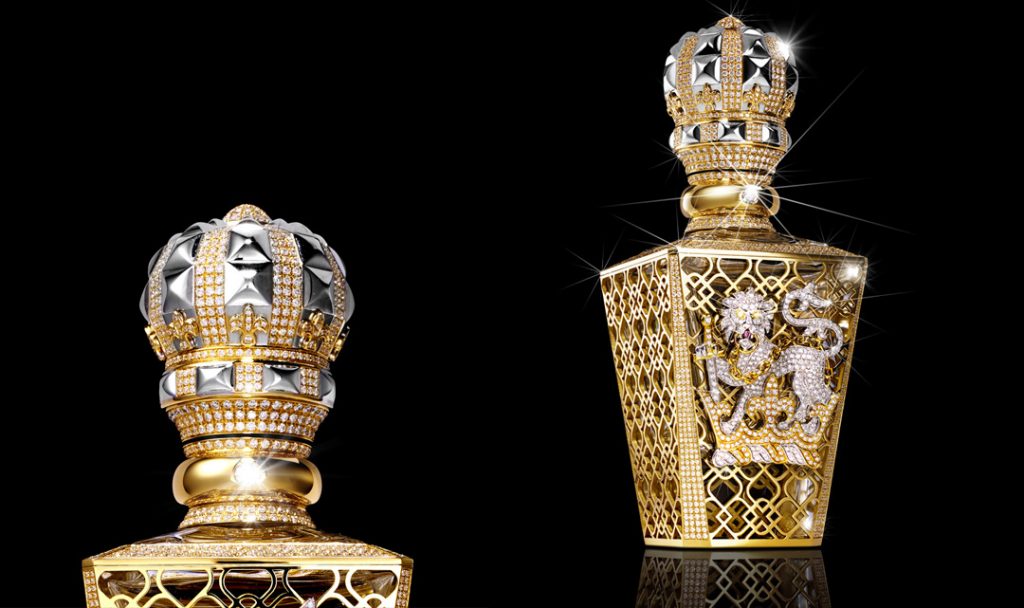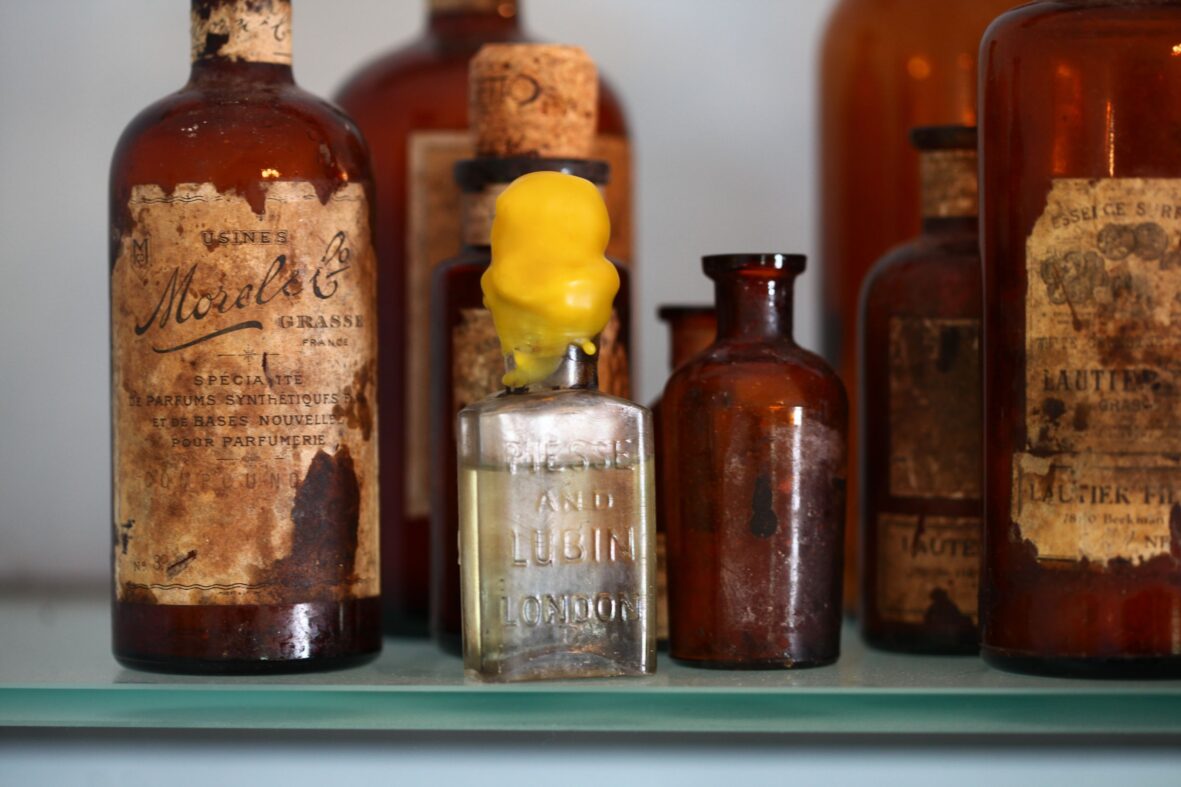
A history of a ghost ship and… certain perfumes
The stories about ghost ships we know only from maritime legends and Hollywood movies. However, not all of them are figments of the imaginations of „seadogs” and cinema screenwriters. One of the most famous stories is related to an interesting mystery of almost 150-year-old perfumes, British Queen Victoria, Sherlock Holmes and a certain perfume factory located in Bermuda…
At the outset, it is worth noting that even 100 years ago the phenomenon known as the ghost ship was quite common. Of course, it did not apply to the ghost-led ships emerging from the mysterious fog, but even without it it was terrifying… It applied to ships which, for unknown reasons, drifted alone on the seas and oceans. Many of them bore traces of fires, explosions of the transported cargo or damage caused by a strong storm. However, it was not always possible to find a logical explanation for the disappearance of the crew.
The cursed ship?
One of the most famous ghost ships was built in 1861 on one of the Canadian islands of Nova Scotia. Originally the brigantine was named Amazon and its captain was Robert McLellan. From the very beginning of Amazon’s sea adventures, they were accompanied by bad luck. Captain McLellan died on the first voyage after suffering severe pneumonia. A few months later the ship had a new captain, but he didn’t have too much luck at all. As a result of his own steering mistake, he collided with a fishing boat. As if that was not enough, in 1867 a badly moored ship was pushed out of the port by a huge storm and thrown onto one of the nearby beaches, where it spent several months becoming a real attraction.
After this event, the ship underwent a major renovation. Its name was also changed to Maria Celeste. It was supposed to help break with Amazon’s unlucky history and, surprisingly, it worked. For a long time, the ship sailed without major problems until the transatlantic voyage scheduled for November 5, 1872. The very start of the trip from New York to Italian Genoa turned out to be difficult. The complete lack of wind forced the captain – Benjamin S. Briggs to postpone the cruise to November 7th. At this date the ship set off with the cargo of more than 1,700 barrels of spirit. There was also an 8-person crew on board and two passengers – the wife and daughter of Captain Briggs.
For over two weeks, the trip across the Atlantic was not extraordinary. In his diary, the captain usually noted short entries about the course to be maintained, the strength of the wind and the approximate speed. On November 23, the ship passed the Azores Islands located approximately 1,500 km from the Iberian Peninsula. On November 24, there was an entry in the journal with an exact location that indicated the right course and making regular progress over the traveled distance. On November 25, Captain Briggs noted: “The ship is moving at a constant speed south-east.” It was his last entry.
On December 5, the attention of the crew of the ship Dei Gratia, sailing 1000 kilometers from Gibraltar, was caught by a tilted ship drifting nearby… It was Maria Celeste. Deserted, with a torn sail, without a lifeboat. The crew of Dei Gratia could not believe their eyes. The ship looked like it had been abandoned in a hurry. It was immediately evident that the crew of the brigantine was detached from their meals… At the same time, a lot of water was noticed in the cargo hold, and the door to it was ripped out, as was the stove for cooking meals. The captain’s bed was wet, but the raincoats were completely dry. A thick rope was tied to the ship, the other end of it was clearly ripped apart and was floating on the top of the water. Moreover nine barrels in the cargo hold was empty.
Maria Celeste was led to the port of Gibraltar where an investigation was carried out. However, it did not show any specific reason for the disappearance of the crew. However, the theory that the captain and his family were killed by the rebellious crew was ruled out. There were no traces of combat, no blood or any object that could be a murder weapon on the ship. Moreover the crew, which was supposed to leave the ship on a lifeboat after killing the superior, did not take their belongings, money or valuables.
After several months of investigation, the ship received a new crew, delivered the goods to Genoa and set off on another route. In the following years, the ship’s condition deteriorated. Maria Celeste eventually settled at the bottom of the Atlantic Ocean near Bermuda.
Returning, however, to the story of the disappearance of the crew, the dominant theory to this day says that the entire crew left the ship in a hurry in a lifeboat tied to the ship with a thick rope. Perhaps this happened during a storm and after the lines were broken, the group was no longer able to get back on board. The reason for the risky decision to leave the ship would be the smell of the leak from a few barrels of spirit. The crew left Maria Celesta with fear of explosions of the alcohol, which wasn’t rare situation in the XIX century.
The unexplained history of the transatlantic brigantine quickly became the source of conspiracy theories and maritime legends. For many people, it was even a confirmation of the existence of the ocean monsters.
In 1884, it seemed as if the world had learned the truth about the unfortunate voyage from November 7, 1872. „Cornhill Magazine” published a statement by J. Habaku Jephson – a man who claimed to be a member of the Maria Celeste crew. The text of Jephson, already on his deathbed, sounded more like a good novel than a description of the events on the ship… Nevertheless the, readers demanded a reopening of the investigation, which forced the newspaper to publish another statement. This time it was published by Arthur Conan Doyle, a young writer who admitted that the entry was merely a short novel inspired by the story of the famous ghost ship. But many people continued to repeat the newspaper story as truth for many years to come and Conan Doyle used his literary talent to write such bestsellers as The Adventures of Sherlock Holmes, The Hound of the Baskervilles and The Lost World.
The perfume that Queen Victoria wore?
As puzzling as the disappearance of the ship’s crew, was the further story of the crew’s personal belongings. Many of them remained on board for a long time, and in some cases until the ship sank. A lot of these things were very useful during subsequent voyages, and some probably lay in the recesses of the ship.
In the 20th and 21st centuries, several diving trips went to the bottom of the ocean to study the remains of Maria Celeste. From our point of view, the most interesting find was pulled out of the water in 2011. It was then that a group of archaeologists retrieved an inconspicuous bottle with a wax-protected cap from the wreckage. Suspicions as to its contents revolved mainly around perfume or alcohol, but the inscriptions on the bottle dispelled all doubts.
It was an intact bottle of luxurious perfume. And how do we know it was a luxury product? Its packaging can prove it. Even in the history the cosmetic packaging often proved the quality of the product. The perfume bottle was an individual product. The inscriptions embossed on it were the name and location of the perfumery. The perfume closure was carefully secured with a cap and sealed with wax for extra protection.
Before the bottle was opened to examine its contents, the inscription on the bottle had already been carefully checked. It was ‘Piesse and Lubin London’. It turned out that Piesse and Lubin was a very luxurious London perfumery, existing for about 100 years from the mid-XIXth century. After an entire investigation by archaeologists, it has been shown that this is the only remaining full bottle of the product of the historic perfumery.
At the time when the crew of Maria Celeste went missing, it was a very famous perfume, though accessible to a few. Their exceptionally luxurious nature made it possible to suspect that the products of this brand that were used by representatives of the British royal family, including Queen Victoria herself!
The second life of perfume
In 2011, the local perfumery Lilibermuda quickly became interested in the find in his area. Experienced employees of this factory proved to be very useful through the testing of a sample of the liquid inside the bottle. As they mentioned, the scent released from the bottle after about 150 years was still fresh and fruity … In the end, the liquid was subjected to chromatographic examination, thanks to which it was possible to find out its exact composition. On this basis, it began to be adapted to the preserved descriptions of the Piesse and Lubin perfumes. The result of the work showed that it was Bouquet Opponax – one of the most popular perfumes of this London brand.
The representatives of the Lilibermuda company eventually decided that it is worth recreating the smell of a bygone era. This is how the Mary Celestia line was created with the characteristic notes of citrus, neroli (bitter orange flower oil), a mixture of tree bark and musk.
Interestingly, in the original articles about the Piesse and Lubin perfumes it was mentioned that the formula of the fragrances was designed in such a way that each year they become even more essential and mature. Today’s version of this perfume is produced in a similar way and the owners of the company also claim that Mary Celestia is a fragrance that is like wine… the older the better. Perhaps this is one of the reasons why tourists visiting Bermuda buy this perfume as a souvenir and investment for years to come. It also seems that the legend of the favorable aging of this perfume will grow in proportion to the number of stories explaining the disappearance of the Maria Celeste crew a century and a half ago …
Powrót do listy artykułów
 photo
photo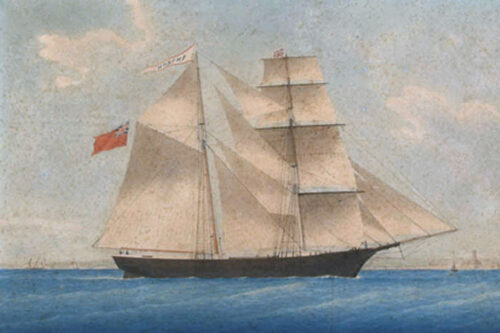 photo
photo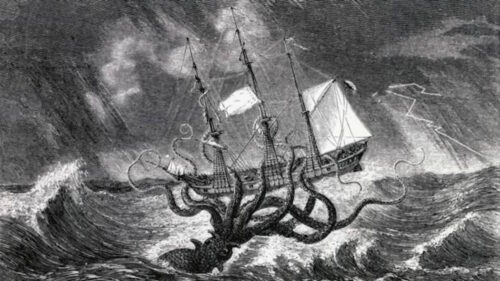
 photo
photo
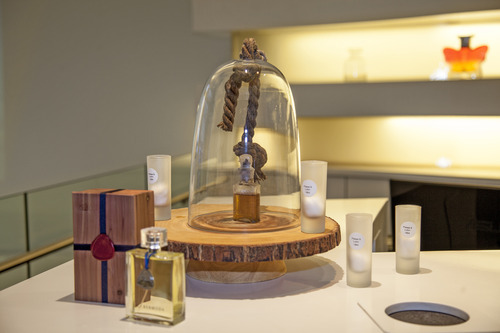 photo
photo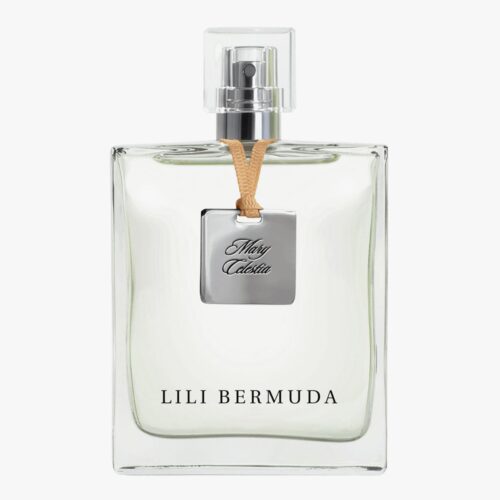 photo
photo
